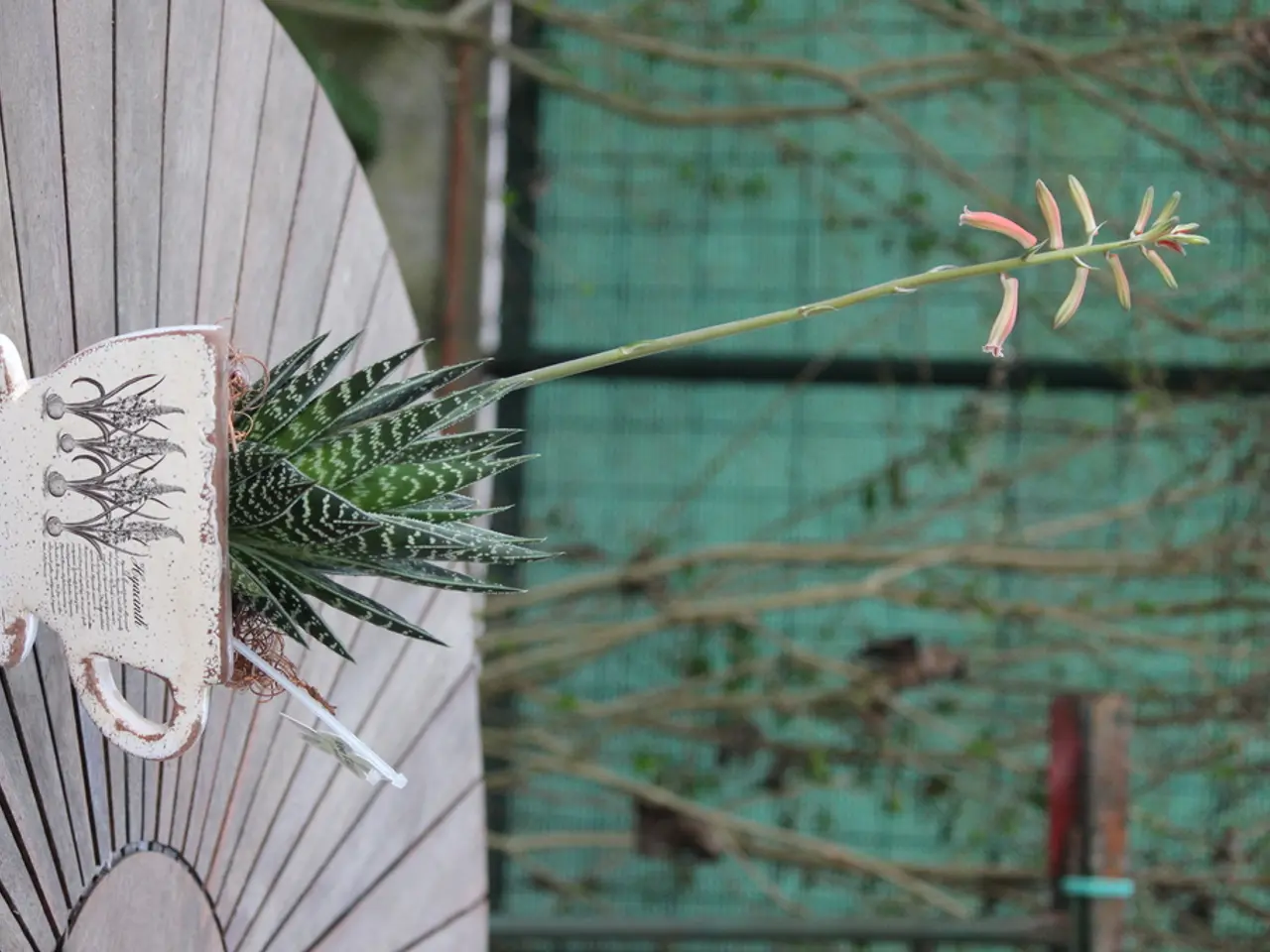Tropical Bonsai Crafted from Brazilian Rosewood, featuring Pithecellobium tortum Variety
Growing a Brazilian Rosewood Bonsai (Dalbergia nigra) at home can be a rewarding experience, yielding a captivating tree with beautiful foliage and form. Here's a comprehensive guide to help you nurture and care for your Brazilian Rosewood Bonsai.
Position and Light
Brazilian Rosewood bonsais thrive in bright light but prefer indirect, filtered sunlight. Ideally, place them where they receive morning sun and afternoon shade. Indoors, position near a bright window with filtered light or use grow lights if natural light is insufficient.
Soil
Choose a well-draining bonsai soil that balances moisture retention and aeration. A mix of akadama, pumice, and lava rock works well. Good drainage is crucial to prevent root rot.
Watering
Water your Brazilian Rosewood bonsai when the top layer of soil feels dry to touch. Thoroughly soak the soil until water drains out of the bottom, ensuring roots are properly hydrated. Avoid letting the soil dry out completely or stay waterlogged.
Temperature and Humidity
Brazilian Rosewood prefers a warm, humid environment typical of tropical climates. Keep temperatures ideally between 60–85°F (15–29°C). Avoid cold drafts or temperatures below 50°F (10°C). Increase humidity by misting leaves or placing the pot on a humidity tray with water and pebbles.
Fertilizing
Feed your bonsai regularly during the growing season (spring to early autumn) with a balanced liquid bonsai fertilizer every 2-4 weeks. Reduce or stop fertilizing in winter when growth slows.
Pruning
Regular pruning is essential to maintain shape and encourage branching. Focus on new shoots to help develop a ball or shrub-like form. Remove dead or weak branches to maintain tree health.
Transplanting (Repotting)
Repot every 2-3 years to refresh soil and manage root growth. Spring is the best time for repotting, just before new growth begins.
Growth Stages and General Care
Young Brazilian Rosewood bonsais require more frequent attention to watering and shaping. As trees mature, growth slows, and care focuses on maintenance and aesthetic refinement.
Additional Tips
- Use a chopstick or similar tool to gently work soil around roots during watering or repotting to eliminate air pockets and improve moisture penetration.
- Apply shredded sphagnum moss as a top dressing to help regulate moisture and prevent soil from drying too quickly.
By adhering to these guidelines, you'll promote a healthy, thriving Brazilian Rosewood bonsai with beautiful foliage and form at home. Adjust care seasonally and based on your specific environment for best results.
Caring for a Brazilian Rosewood Bonsai can enhance both your home-and-garden lifestyle and personal hobbies, providing an engaging and beautiful addition to your living space. Placing it in bright, indirect light and ensuring regular fertilizing, watering, and pruning are all essential aspects of bonsai care for a thriving Brazilian Rosewood Bonsai.




